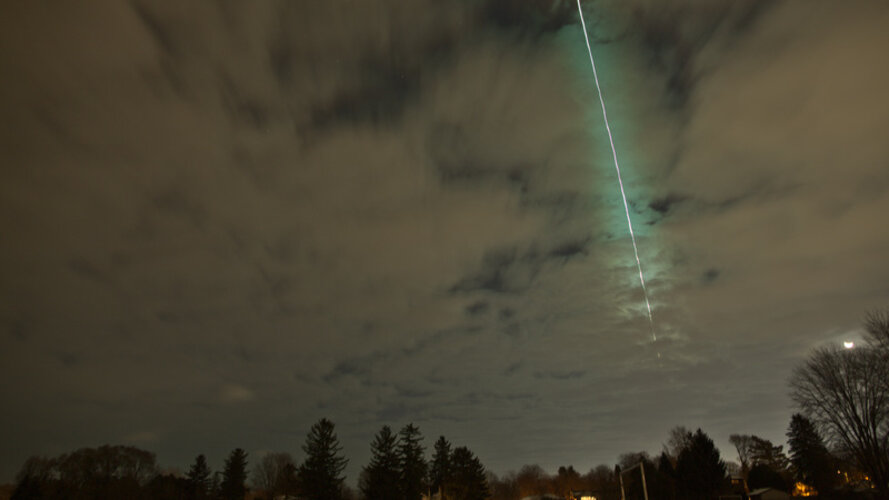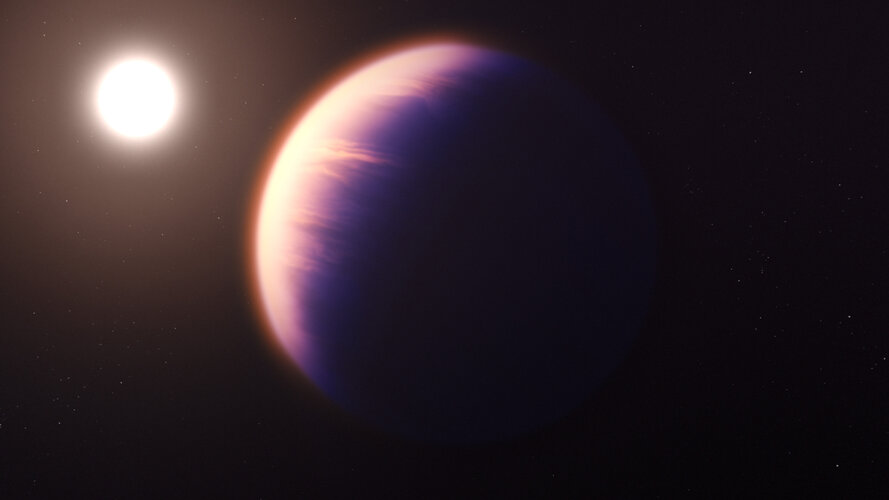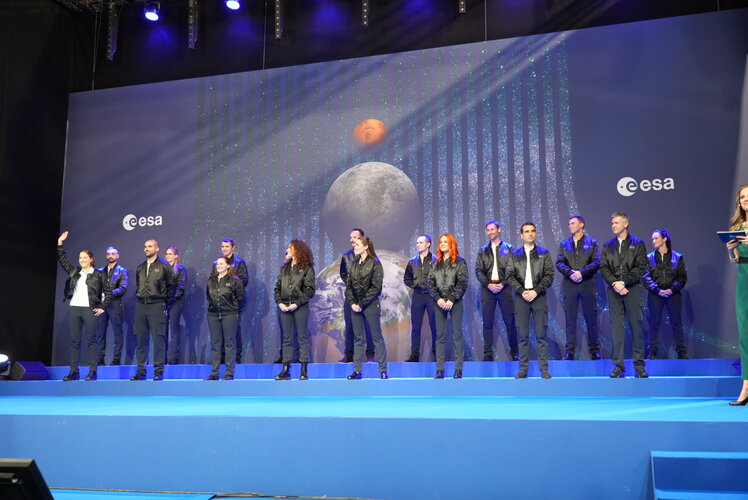
Copernical Team
The sixth asteroid impact we saw coming

Webb reveals an exoplanet atmosphere as never seen before

The NASA/ESA/CSA James Webb Space Telescope just scored another first: a molecular and chemical portrait of a distant world’s skies. While Webb and other space telescopes, including the NASA/ESA Hubble Space Telescope, have previously revealed isolated ingredients of this heated planet’s atmosphere, the new readings provide a full menu of atoms, molecules, and even signs of active chemistry and clouds. The latest data also give a hint of how these clouds might look up close: broken up rather than as a single, uniform blanket over the planet.
ESA presents new generation of astronauts

The European Space Agency has chosen 17 new astronaut candidates from more than 22 500 applicants from across its Member States. In this new 2022 class of ESA astronauts are five career astronauts, 11 members of an astronaut reserve and one astronaut with a disability.
Reading the ripples at observation mountain
 After spending over 600 sols (days on Mars) exploring the diverse geologic environment of Jezero Crater, collecting drilled rock cores (and one atmospheric sample) along the way, Perseverance recently spent some time parked near a large sand ripple named "Observation Mountain," with sights set on something widespread yet unique. Regolith is the sandy, dusty, loose material covering much of the M
After spending over 600 sols (days on Mars) exploring the diverse geologic environment of Jezero Crater, collecting drilled rock cores (and one atmospheric sample) along the way, Perseverance recently spent some time parked near a large sand ripple named "Observation Mountain," with sights set on something widespread yet unique. Regolith is the sandy, dusty, loose material covering much of the M NASA's Webb reveals an exoplanet atmosphere as never seen before
 NASA's James Webb Space Telescope just scored another first: a molecular and chemical profile of a distant world's skies.
While Webb and other space telescopes, including NASA's Hubble and Spitzer, previously have revealed isolated ingredients of this broiling planet's atmosphere, the new readings from Webb provide a full menu of atoms, molecules, and even signs of active chemistry and clo
NASA's James Webb Space Telescope just scored another first: a molecular and chemical profile of a distant world's skies.
While Webb and other space telescopes, including NASA's Hubble and Spitzer, previously have revealed isolated ingredients of this broiling planet's atmosphere, the new readings from Webb provide a full menu of atoms, molecules, and even signs of active chemistry and clo CAPSTONE forges new path for NASA's future Artemis lunar mission
 NASA's CAPSTONE spacecraft has completed final maneuvers to place it in its target orbit around the Moon, refining its path in the orbit it arrived to last week.
The spacecraft now is in the operational phase of its pathfinding mission, during which it will test an orbit key to future Artemis missions and demonstrate new technologies for spacecraft operating near the Moon.
"NASA's pa
NASA's CAPSTONE spacecraft has completed final maneuvers to place it in its target orbit around the Moon, refining its path in the orbit it arrived to last week.
The spacecraft now is in the operational phase of its pathfinding mission, during which it will test an orbit key to future Artemis missions and demonstrate new technologies for spacecraft operating near the Moon.
"NASA's pa Detected: sulfur compound created by photochemistry in exoplanet atmosphere
 JWST has captured the first-ever evidence of a compound in the atmosphere of an exoplanet-sulfur dioxide-created by a starlight-mediated chemical reaction. The discovery was announced by the mission's Exoplanet Community Early Release Science Team, which includes five Carnegie astronomers-Munazza Alam, Anjali Piette, Nicole Wallack, Peter Gao, and Johanna Teske-and published, along with other ob
JWST has captured the first-ever evidence of a compound in the atmosphere of an exoplanet-sulfur dioxide-created by a starlight-mediated chemical reaction. The discovery was announced by the mission's Exoplanet Community Early Release Science Team, which includes five Carnegie astronomers-Munazza Alam, Anjali Piette, Nicole Wallack, Peter Gao, and Johanna Teske-and published, along with other ob China to complete lunar outpost by 2028
 China will possibly complete the establishment of a lunar research outpost based on two robotic exploration missions by 2028 and send Chinese astronauts to the moon around 2030, according to the chief designer of China's lunar exploration program.
Wu Weiren, also an academician of the Chinese Academy of Engineering and the director of the country's deep-space exploration laboratory, said r
China will possibly complete the establishment of a lunar research outpost based on two robotic exploration missions by 2028 and send Chinese astronauts to the moon around 2030, according to the chief designer of China's lunar exploration program.
Wu Weiren, also an academician of the Chinese Academy of Engineering and the director of the country's deep-space exploration laboratory, said r Cutting-edge experiments ride SpaceX's 26th CRS mission to space station

SpaceX's 26th commercial resupply mission (CRS) is scheduled to launch to the International Space Station from NASA's Kennedy Space Center in Florida in late November. The Dragon spacecraft carries scientific experiments and technology demonstrations that explore growing plants in space, creating nutrients on-demand, in-space construction, and more.
Here are details on some of the research launching to the space station:
Big hopes for small tomatoes
A continuous source of nutritious food is essential for long-duration exploration missions, and the typical pre-packaged astronaut diet may need to be supplemented by fresh foods produced in space. Researchers have been testing a plant growth unit on station known as Veggie and have successfully grown a variety of leafy greens.
D-Orbit signs payload hosting contract with SpacePNT
 The space transportation and logistics company D-Orbit has announced the signing of a hosted payload contract with SpacePNT, a Swiss company specialized in the design and manufacturing of low cost high-accuracy GNSS receivers for the New Space satellite market.
The contract covers the integration of a new GNSS receiver prototype into ION Satellite Carrier, D-Orbit's proprietary orbital tra
The space transportation and logistics company D-Orbit has announced the signing of a hosted payload contract with SpacePNT, a Swiss company specialized in the design and manufacturing of low cost high-accuracy GNSS receivers for the New Space satellite market.
The contract covers the integration of a new GNSS receiver prototype into ION Satellite Carrier, D-Orbit's proprietary orbital tra 